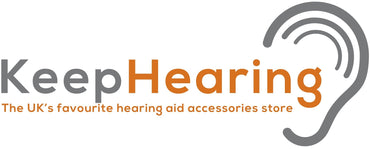When deciding to go private when purchasing hearing aids many people are shocked at hearing aid prices at first sight. There are many factors which need to be considered; variation in styles, brands, additional accessory costs and technology. One thing many people overlook is the type and level of hearing loss you have. People should be aware that it is not always the case that the greater the hearing loss you have the more expensive the hearing aids. Modern hearing aids all use digital technology, this is the main contributing factor to the increase in prices over analog technology.
There are five main styles available with different technologies and capabilities. Each style varies in price quite significantly, custom fit hearing aids which need to be precision moulded obviously cost more to produce and therefore the retail price is usually quite high, the advantage of these types of hearing aids is they are very discreet and fit perfectly into the ear canal. The most discreet custom hearing aid is commonly referred to as Completely In the Canal (CIC), it uses the natural acoustic properties of the ear concha. In many cases manufactures are able to offer all the functionality that larger hearing aids in the same model range posses.
The other types are In the Ear (ITE), In the Canal (ITC), Receiver In The Ear (RITE) and Behind The Ear (BTE). BTE hearing aids are what people are most familiar with seeing. Most people aren’t aware of the other hearing aid types available. Studies and surveys have shown there is a misperception around hearing aids despite significant advances in technology and design. Society has associated them with old age, and this is main reason why the younger generation avoid using them, or investigating the technology further, despite having difficulty hearing sounds.
BTE and RITE hearing aids are mainly for people with severe-profound hearing losses. They are easier to handle particularly for people with arthritis or sight impairment. RITE hearing aids can come with standard or power amplifiers depending on the severity of hearing loss. They are also slightly smaller than BTE hearing aids and therefore far more discreet. They are very comfortable and have tubing which closely fits your ear shape, some users say over time it feels like you aren’t wearing a hearing aid.
When searching online for hearing aids you will find some models ranging from £20 (approx: $30) all the way up to £5,000 (approx $7,500) and beyond. The cheaper hearing aids aren’t recommended, they are usually pre-programmed and not suited for your specific hearing loss. They have a general setting for an estimated mild, moderate or severe hearing loss. In fact many professionals believe these types of devices can actually worsen a person hearing loss over time, if selected without professional advice.
As a final note people looking into buying hearing aids online above £1,000 (approx: $1,500) should look out for what the companies offer. Most dispensers/audiologists visit you, offer free hearing tests, fit the hearing aid and offer money back guarantees. They can be up to 50% cheaper than high street stores and offer a variety of the latest models. It is highly recommend to do price comparisons and also try a multiple dispensers to see what you’re comfortable.
Cheap hearing aids doesn’t always mean the best service.
